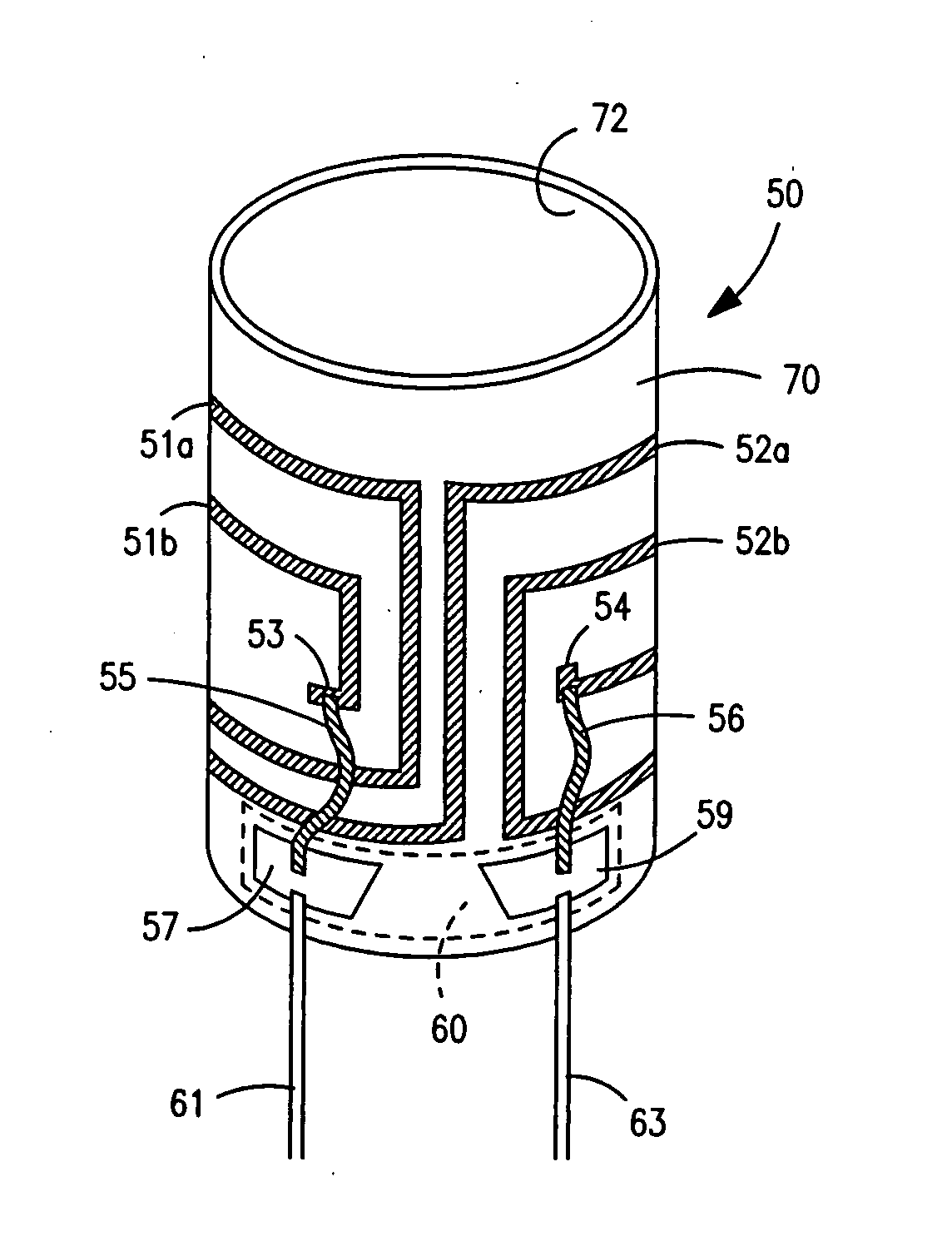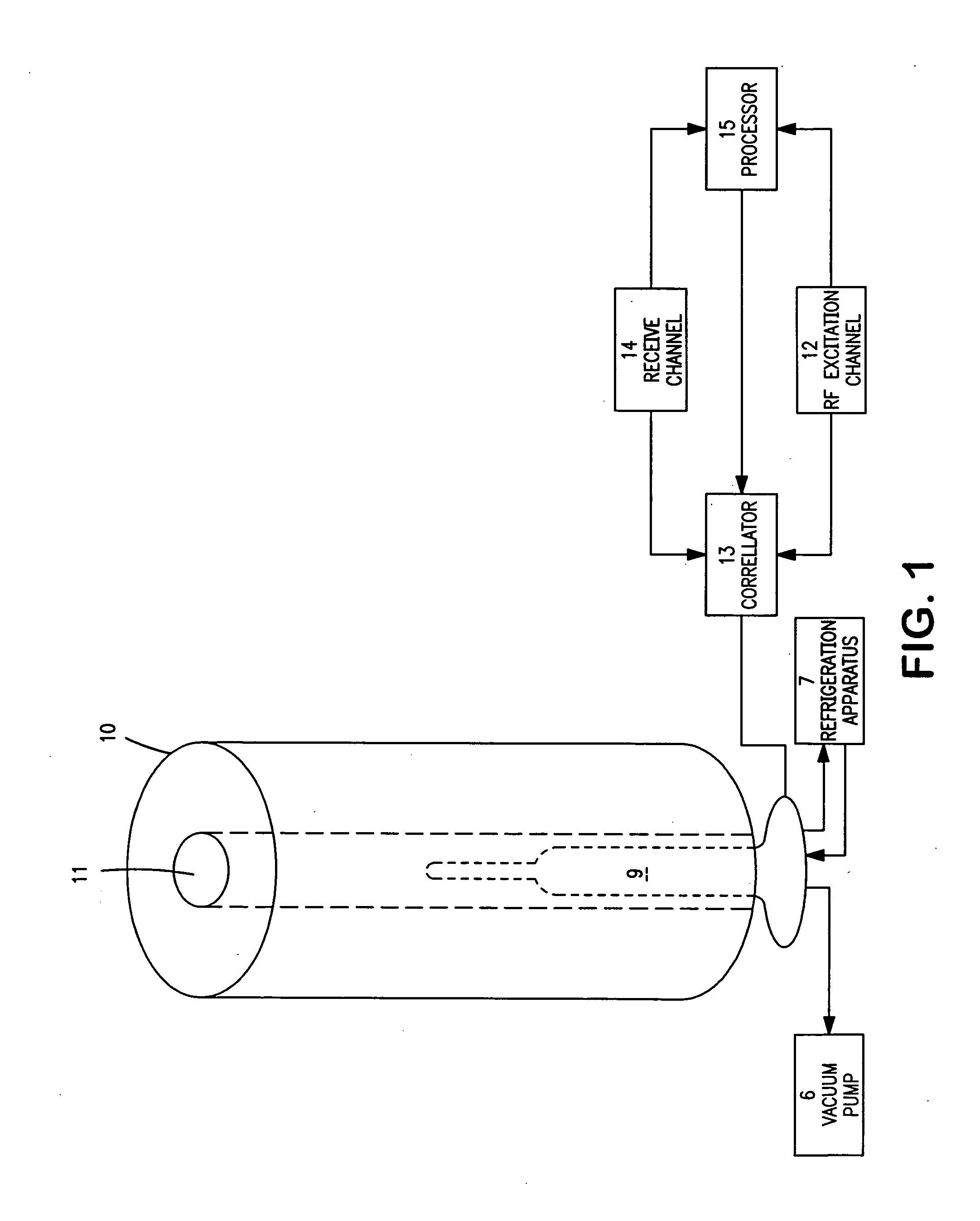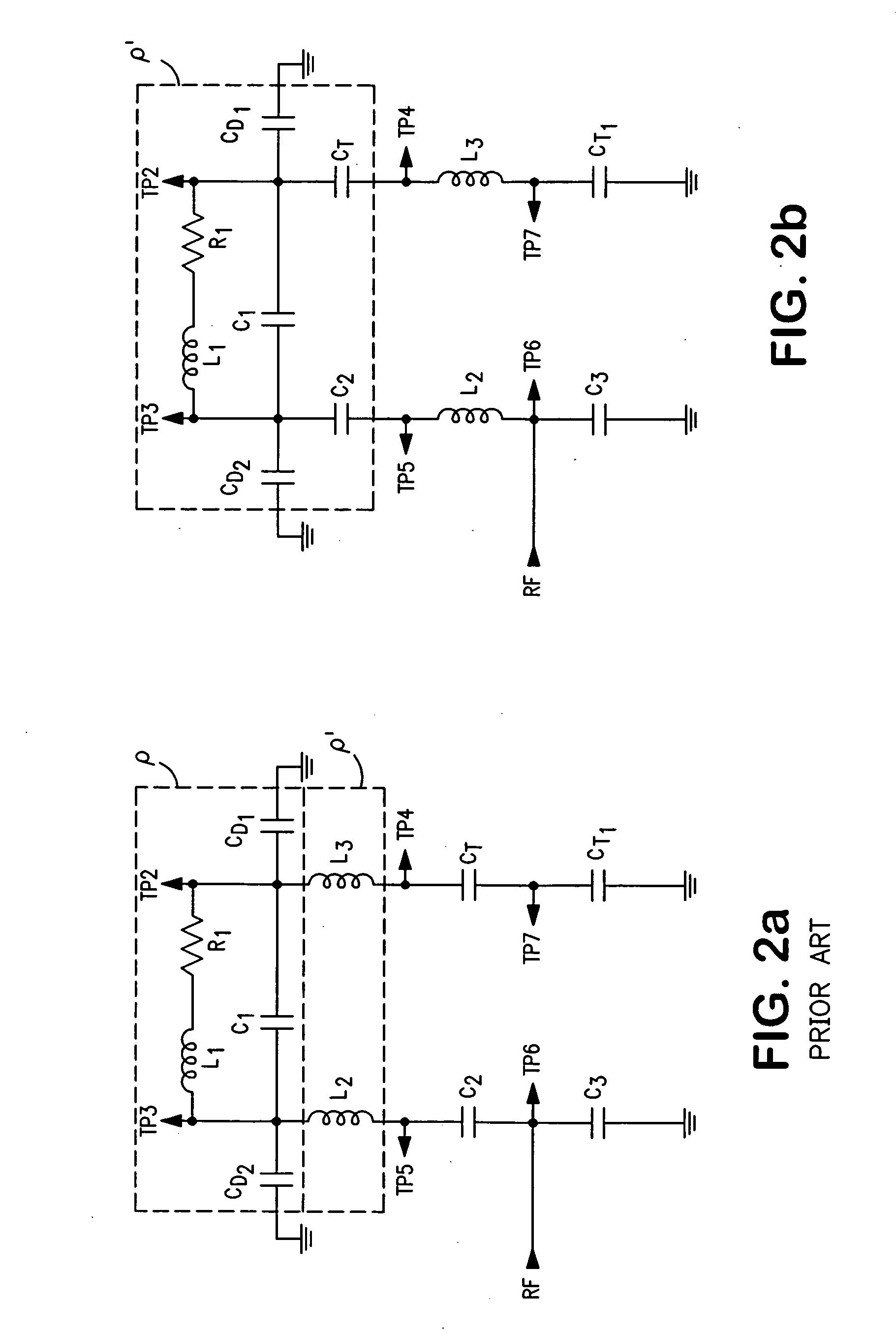NMR coil having integrated capacitive structures
a capacitive structure and nmr coil technology, applied in the field of nmr probes, can solve the problems of reducing efficiency, reducing radiative losses, and reducing noise constituents, so as to reduce rf voltage difference, reduce noise, and avoid discontinuities in magnetic susceptibility distribution.
- Summary
- Abstract
- Description
- Claims
- Application Information
AI Technical Summary
Benefits of technology
Problems solved by technology
Method used
Image
Examples
Embodiment Construction
[0017]FIG. 1 serves to illustrate conceptually the context of this work within an NMR system. An NMR probe 9 is disposed within the bore 111 of a superconducting magnet 10. A sample for analysis is presented in a sample vessel (not shown) inserted in the probe 9. The probe 9 inductively couples to the nuclear spins of the sample for excitation through at least a first RF excitation channel 12 and separately for signal acquisition through a receive channel 14. Excitation and receive functions often share a common probe coil for non-concurrent operation through correllator 13, but multiple coils are frequently employed to serve different functions, such as to furnish spin decoupling, field-frequency lock, and the like. The receive channel ordinarily includes a preamplifier and RF demodulator, phase detector, analog-to-digital conversion (ADC) and various signal processing apparatus together with a digital processor 15 to effect averaging, Fourier transformation, storage and the like. ...
PUM
 Login to View More
Login to View More Abstract
Description
Claims
Application Information
 Login to View More
Login to View More - R&D
- Intellectual Property
- Life Sciences
- Materials
- Tech Scout
- Unparalleled Data Quality
- Higher Quality Content
- 60% Fewer Hallucinations
Browse by: Latest US Patents, China's latest patents, Technical Efficacy Thesaurus, Application Domain, Technology Topic, Popular Technical Reports.
© 2025 PatSnap. All rights reserved.Legal|Privacy policy|Modern Slavery Act Transparency Statement|Sitemap|About US| Contact US: help@patsnap.com



